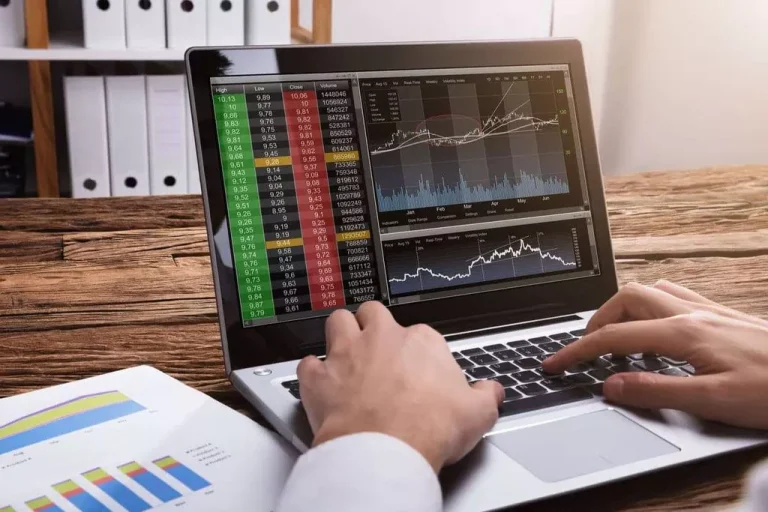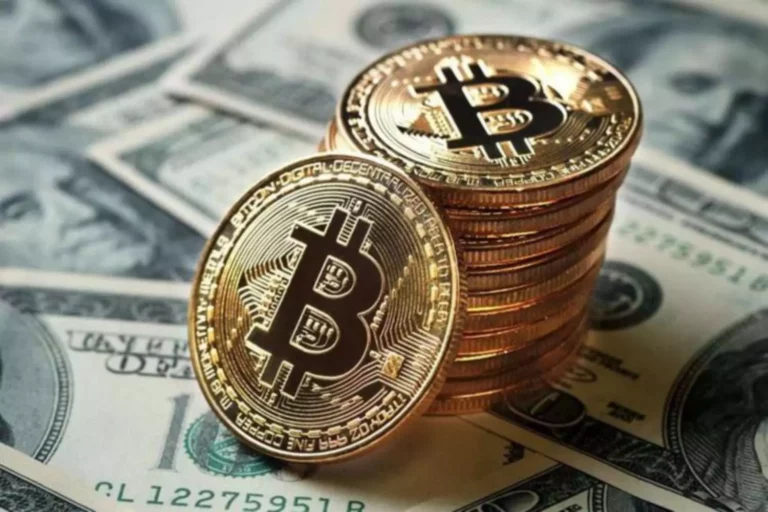The order book is essentially an inventory of offers from prospects to buy or promote a certain quantity of Bitcoin at a particular price in Euros. DODO is an example of a decentralized buying and selling protocol that makes use of exterior value feeds for its AMM. Despite this, CSMMs are hardly ever used as a standalone market maker, due to liquidity considerations about handling massive trades.
Smart contracts “automate” trading on AMM DEXs, but these packages do not magically create cash for users to trade. AMM DEXs have to incentivize individuals to add liquidity to their protocols for users to trade. However, instead of working completely with centralized buying and selling companies or merchants, DEXs let any crypto trader become a liquidity supplier (LP) by contributing digital belongings to the protocol. Traditional exchanges depend on liquidity from their very own reserves or from an individual market maker to execute orders.
Additionally, customers can earn rewards by staking their crypto into liquidity swimming pools. With any AMM, when the value of its property shifts significantly in external markets, traders can use arbitrage to revenue off the AMM. The public sale mechanism is intended to return more of that worth to liquidity providers, and more quickly bring the AMM’s prices back into balance with exterior markets. Each AMM provides its liquidity providers the power to vote on its fees, in proportion to the variety of LP tokens they hold. Whenever anyone places a model new vote, the AMM recalculates its charge to be a mean of the most recent votes, weighted by how many LP tokens these voters hold.

‘Minting’ is the method the place non-fungible tokens (NFTs) or new coins/tokens are usually generated on Proof of Stake (PoS) blockchains. A liquidation name is the method where a buying and selling platform forcibly closes a dealer’s place because the margin account steadiness falls under the required upkeep margin. Because AMMs are a model new model of a conventional apply known as “market making,” reviewing how market making works on CEXs and contrasting it with DeFi helps to clarify the perform of AMMs.
Amms And The Constant Product Method
The XRP Ledger implements a geometrical mean AMM with a weight parameter of 0.5, so it features like a continuing product market maker. For an in depth explanation of the fixed product AMM formulation and the economics of AMMs normally, see Kris Machowski’s Introduction to Automated Market Makers. When you commerce towards an AMM, the change rate adjusts based mostly on how much your trade shifts the stability of belongings the AMM holds. As its supply of 1 asset goes down, the price of that asset goes up; as its provide of an asset goes up, the worth of that asset goes down. For instance, a liquidity pool might maintain ten million dollars of ETH and ten million dollars of USDC. A dealer might then swap 500k dollars worth of their very own USDC for ETH, which might raise the worth of ETH on the AMM.

AMMs fill the gap out there as there are not any restrictions on what coins could be listed as long as liquidity may be incentivised. The challenge with hybrid fashions is to sew these totally different components into a robust and dependable AMM material https://www.xcritical.com/. An instance of such a mannequin is Curve Finance, which combines CPMM and CSMM models to supply a capital-efficient platform to change pegged property. Constant sum market makers (CSMMs) are an AMM variant that use the sum of two tokens as the idea, in distinction to CPMM which uses the product.
An implementation of this can be seen in digital AMMs (vAMMs), where market individuals commerce using artificial tokens (vDAI for DAI, vETH for ETH, and so forth.) whereas their actual crypto is locked in a sensible contract. For occasion, a hybrid model can combine the CSMM variant’s capability to scale back the impression of huge trades on the entire pool with the CMMM variant’s performance to allow multi-asset liquidity pools. Uniswap, Curve, and Balancer are prominent first-generation automated market makers, however they aren’t with out their defects. This article explains what automated market makers are, how they work, and why they are critical to the DeFi ecosystem.
What Are Liquidity Pools And Liquidity Providers?
Instead, AMMs use mathematical formulas to price digital belongings based on liquidity pool balances while offering liquidity providers (LPs) a share of the buying and selling fees as an incentive to provide liquidity to a buying and selling pool. Low liquidity can lead to price slippage, where the asset’s worth significantly shifts between the initiation and completion of a trade. This phenomenon is particularly prevalent in unstable markets like cryptocurrencies. To mitigate worth slippage and maintain a clean buying and selling expertise, centralized exchanges rely on skilled traders or financial establishments to act as market makers.

AMMs combine Smart Contracts and incentives for liquidity provision to automate cryptocurrency buying and selling and disrupt the normal centralised change model, replacing it with the DEX. Liquidity suppliers tackle the risk of impermanent loss, a possible loss that they may incur if the value of the underlying token pair drastically adjustments in either path. If the loss is greater than the acquire obtained through amassing buying and selling fees, the liquidity provider would have been higher off simply HODLing the tokens.
The Revolutionary Frameworks Of Distinguished Dex Platforms Unveiled
This is how an AMM transaction works and also the best way an AMM acts as each liquidity supplier and pricing system. Due to the versatility of AMMs, a number of the most popular DEXs like Curve, Uniswap, and Bancor use an identical mechanism to operate. Automated market makers were first launched by Vitalik Buterin in 2017 in his post about on-chain market makers. The method works by maintaining a continuing ratio between two assets, where one asset’s value will increase as the other decreases. When you need to trade in the decentralized change, your Offers and Cross-Currency Payments can automatically use AMMs to complete the trade. A single transaction might execute by matching Offers, AMMs, or a combination of both, depending on what’s cheaper.
These entities create multiple buy and promote orders to match the orders of retail merchants, effectively guaranteeing counterparties are at all times obtainable for all trades. In the context of centralized exchanges, these liquidity providers function market makers, facilitating the liquidity provisioning process. Liquidity is the lifeblood of AMMs, and swimming pools lacking sufficient liquidity are susceptible to slippages. To handle this concern, AMMs incentivize users to deposit digital property into liquidity pools, enabling different customers to commerce towards these funds. In return, liquidity providers (LPs) receive a portion of the fees generated from transactions executed inside the pool. In essence, in case your deposit represents 1% of the liquidity in a pool, you’ll receive an LP token representing 1% of the accrued transaction fees in that pool.
Let’s find out, which instruments does the vitality market embrace, what is the role of a liquidity provider in the power market, how to choose the best liquidity providers and more. What sets PancakeSwap apart is its day by day lottery characteristic, the place customers can put their CAKE into a pool for an opportunity to win big prizes. This adds an element of excitement and gamification to the platform, making it appealing to many traders. Alternatively, anyone can perform a particular deposit to fund the AMM as if it had been new. An AMM offers usually higher exchange charges when it has larger general quantities in its pool. This is because any given commerce causes a smaller shift within the stability of the AMM’s assets.
Chainlink Oracles Are Powering Amm Innovation
When an LP wishes to exit a pool, they can redeem their LP token to assert their share of the transaction charges. For occasion, dYdX makes use of an off-chain orderbook model to supply eligible customers a quick and environment friendly crypto trading expertise. DYdX additionally presents eligible merchants seamless API integrations attracting deep liquidity from the DeFi sector, further reducing the chance of slippage when buying and selling crypto property. DYdX believes that the hybrid matching infrastructure provides the quickest, cheapest, and most convenient way for eligible traders to benefit from decentralized derivatives buying and selling.

Still, Flash Loans are also getting used to control and warp crypto asset prices and generate huge returns for those with the talents to understand the darkish facet of DEFI. If traders purchase BTC they diminish that side of the pool and enhance the pool of USDT rising the relative value of BTC. This also incentivises LPs to provide more BTC because liquidity provision relies on the proportion of the general pool you add, not the specific worth at the time. Curve Finance is an automatic market maker-based DEX with a novel positioning of being a dominating stablecoin change.
Automated market makers (AMMs) have turn out to be the backbone of decentralized trading, enabling a seamless crypto asset trading experience anybody can enjoy. However, if the trade struggles to find suitable matches for orders in real-time, it signifies low liquidity for the concerned property. Liquidity, within the buying and selling world, refers to how easily an asset can be bought or sold. High liquidity suggests an active market with many traders engaging in transactions, whereas low liquidity indicates less activity, making it more durable to execute trades. Flash Loans use custom-written Smart Contracts to use arbitrage throughout the DEFI ecosystem – market inefficiencies throughout tokens and lending pools.
Fundamentals: What Is An Automatic Market Maker (amm)?
The customers that deposit their assets to the pools are often identified as liquidity suppliers (LPs). Automated market makers (AMMs) make it easier for decentralized exchanges to supply liquidity in a safe, decentralized manner. Read on to be taught automated market maker crypto what automated market makers are, how they work, and what various sorts of AMMs you ought to use. In DeFi protocols like an automatic market maker, any person can create liquidity swimming pools and add liquidity to a buying and selling pair.
How Does An Automatic Market Maker Work?
The Market Depth metric is often described as the quantity required to maneuver the value +/-2%. The larger that volume the higher confidence you’ll be able to have that your commerce will not transfer the price away from your desired entry or exit. DEX’s are a core element of DEFI – decentralised finance – generating 24hr trading quantity in excess of $2bn, based on Coingecko. This information reveals you what unites and separates Bitcoin (BTC) and Solana (SOL), two of the main cryptocurrencies on the crypto market. Learn all about what fiat cash is, the means it capabilities in trendy economies, and how it compares to other kinds of forex, each digital and physical. This advised improvement stems from the belief that a standalone AMM mannequin could not suffice to handle all challenges.